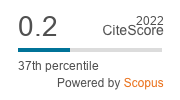Technological Enhancements of the Human Body. A Conceptual Framework
Keywords:
Anthropology, Cybernetics, Emergentism, Technological enhancementsAbstract
Literature proposes a variety of theories of technological enhancement of the human being. These are often based on diverging ontological assumptions and thus do not allow to draw generalized conclusions across various theories. This paper proposes a conceptual framework that allows for a generalized approach to ethical issues related to the technological enhancement of the human being. The framework is based on foundations provided mainly by systems theory. Central concepts such as modularity, emergentism, and cybernetics paired with the notions of body and mind are paramount. The article maintains that the human being can be seen as a hierarchical complex system composed of two sub-systems, i.e. body and mind. Each of these sub-systems can be viewed as a complex system that can be further subdivided into sub-systems of lower rank. Each system and sub-system participates as a whole and in its sub-parts in higher-rank systems within and beyond the system observed. There is thus a network of interconnected complex systems where the human being is but one – even though relatively special – integrated part. The article concludes that the human being viewed as a complex system has essential emergent properties which can be enhanced, but not significantly altered. Hereby, enhancement is associated with a linear evolution of a human being, whereas alteration is associated with a disruptive change of the human being that gives rise to a new species.



